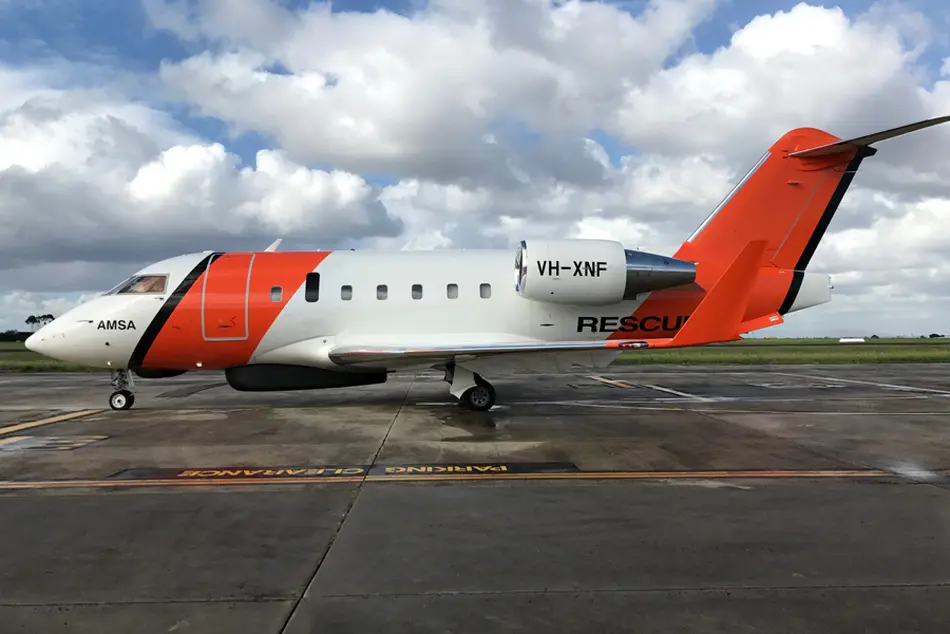Cobham Unveils Third Search and Rescue Aircraft

TIN news: Cobham’s third search-and-rescue aircraft was officially unveiled by the Minister for Infrastructure and Transport, The Hon Darren Chester MP at Essendon Airport on Wednesday 26 April after being accepted into service by the Australian Maritime Safety Authority (AMSA) earlier this month.
The third specially-modified Bombardier Challenger CL-604 jet completes AMSA’s operational fleet of the most technologically advanced civil search-and-rescue aircraft in the world. These dedicated search and rescue jets are based in Cairns, Perth and now Essendon. A fourth jet will also be modified and based in Essendon as a back-up aircraft.
These aircraft significantly enhance airborne search-and-rescue tasks with faster response times, extended range and considerably longer presence in Australia’s search and rescue region using the latest generation search sensors and providing much-advanced communications with AMSA’s Joint Rescue Coordination Centre in Canberra. The technology on board these aircraft enables AMSA’s Search and Rescue officers to be virtual crew members for the first time ever, with eyes and ears at the scene as events unfold.
AMSA is responsible for Australia’s national maritime and aviation search and rescue across an internationally agreed search and rescue region covering approximately one tenth of the world’s surface.
A contract was signed in October 2014 with Cobham SAR Services to provide the next generation aircraft dedicated to search and rescue from late 2016, for a period of 12 years. Cobham will acquire, modify, commission, operate and maintain four Bombardier Challenger CL-604 special mission jet aircraft to provide a search and rescue capability over land and sea. The aircraft will be available for search and rescue tasking at short notice, 24 hours a day, seven days a week.
The Bombardier Challenger 604 jets are being specifically modified to AMSA’s requirements and fitted with new generation sensors, high vision windows and air operable doors for aerial delivery of life saving equipment.
The first aircraft arrived in Australia in early January 2016.
